Related Research Articles
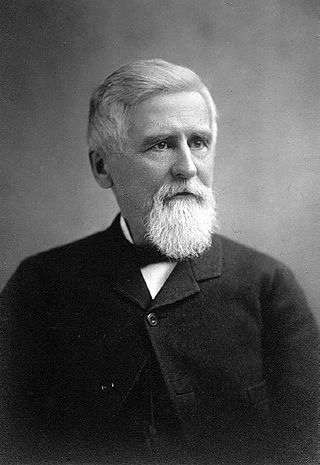
Henry Charles Lea was an American publisher, civic activist, philanthropist and historian from Philadelphia, Pennsylvania.

The Vatican Apostolic Library, more commonly known as the Vatican Library or informally as the Vat, is the library of the Holy See, located in Vatican City. Formally established in 1475, although it is much older—it is one of the oldest libraries in the world and contains one of the most significant collections of historical texts. It has 75,000 codices from throughout history, as well as 1.1 million printed books, which include some 8,500 incunabula.

The Vatican Apostolic Archive, formerly known as the Vatican Secret Archive, is the central repository in the Vatican City of all acts promulgated by the Holy See.

Justin Winsor was an American writer, librarian, and historian. His historical work had strong bibliographical and cartographical elements. He was an authority on the early history of North America and was elected the first president of the American Library Association as well as the third president of the American Historical Association.

Michael Francis Egan was an Irish, later American, prelate of the Roman Catholic Church. He was born in Ireland in 1761, and joined the Franciscan Order at a young age. He served as a priest in Rome, Ireland, and Pennsylvania and became known as a gifted preacher. In 1808, Egan was appointed the first Bishop of Philadelphia, and held that position until his death in 1814. Egan's tenure as bishop saw the construction of new churches and the expansion of the Catholic Church membership in his diocese, but much of his time was consumed by disputes with the lay trustees of his pro-cathedral, St. Mary's Church in Philadelphia. He died in Philadelphia, probably of tuberculosis, in 1814.
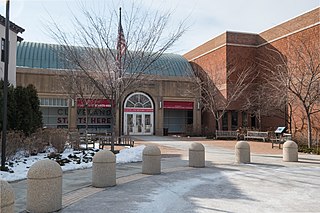
The Western Reserve Historical Society (WRHS) is a historical society in Cleveland, Ohio. The society operates the Cleveland History Center, a collection of museums in University Circle.
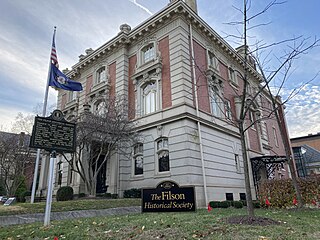
The Filson Historical Society, founded in 1884, is a privately supported historical society located at 1310 South 3rd Street in Louisville, Kentucky. The Filson is an organization dedicated to providing continuing adult education in the form of quarterly peer-reviewed academic journal, Ohio Valley History, a quarterly magazine, The Filson, weekly lectures, historical tours, and exhibits.
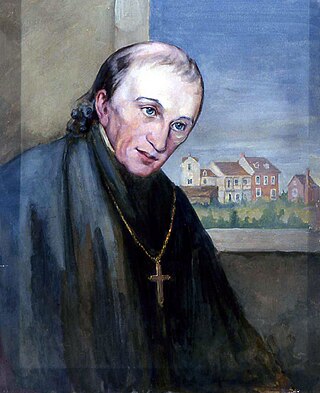
Leonard Neale was an American Catholic prelate and Jesuit who became the second Archbishop of Baltimore and the first Catholic bishop to be ordained in the United States. While president of Georgetown College, Neale became the coadjutor bishop to John Carroll and founded the Georgetown Visitation Monastery and Academy.
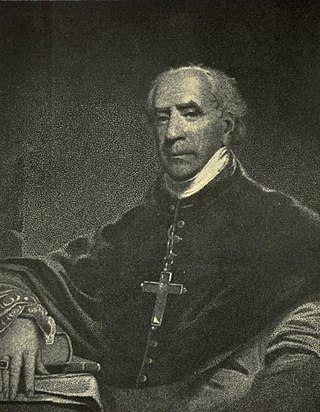
Henry Conwell was an Irish-born Catholic bishop in the United States. He became a priest in 1776 and served in that capacity in Ireland for more than four decades. After the Pope declined to appoint him Archbishop of Armagh, the diocese in which he served as Vicar General, he was instead installed as the second Bishop of Philadelphia in 1819.

James Bennett Griffin or Jimmy Griffin was an American archaeologist. He is regarded as one of the most influential archaeologists in North America in the 20th century.

Martin Ignatius Joseph Griffin (1842–1911) was an American Catholic journalist and historian, instrumental to the founding of the American Catholic Historical Society. He contributed widely to scholarly journals and was the author of several books and monographs on the history of Catholicism in the United States.

Old St. Joseph's Church is a church in Philadelphia, Pennsylvania, and was the first Roman Catholic church in the city. The church was founded in 1733; the current building was dedicated in 1839.

Robert P. Molyneux was an English-American Catholic priest and Jesuit missionary to the United States. Born to a prominent English family, he entered the Society of Jesus and studied at the College of St Omer in France. When the school moved to Bruges, Belgium, he followed, becoming a master. In 1771, he emigrated to the United States as a missionary, where he took up pastoral work in Philadelphia.
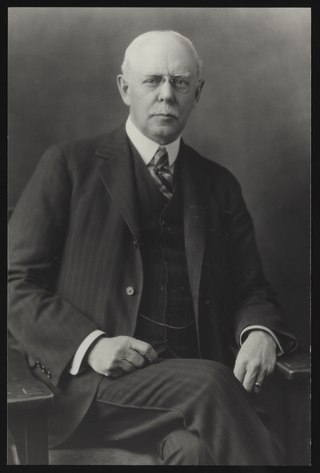
Arthur Dehon Little was an American chemist and chemical engineer. He founded the consulting company Arthur D. Little and was instrumental in developing chemical engineering at the Massachusetts Institute of Technology (MIT). He is credited with introducing the term unit operations to chemical engineering and promoting the concept of industrial research.

Patrick Manogue was a Irish-born prelate of the Catholic Church in America. He served as the founding bishop of the Diocese of Sacramento in California from 1886 until his death in 1895. He previously served as bishop of the Diocese of Grass Valley in California from 1881 until 1886.

Reuben Thomas Durrett was a lawyer, jurist, linguist, poet, editor, journalist, history writer, and Kentucky bibliographer. In 1871, Durrett founded the failed The Public Library of Kentucky. In 1884, Durrett founded the Filson Club, now the Filson Historical Society.

William Matthews, occasionally spelled Mathews, was an American who became the fifth Roman Catholic priest ordained in the United States and the first such person born in British America. Born in the colonial Province of Maryland, he was briefly a novice in the Society of Jesus. After being ordained, he became influential in establishing Catholic parochial and educational institutions in Washington, D.C. He was the second pastor of St. Patrick's Church, serving for most of his life. He served as the sixth president of Georgetown College, later known as Georgetown University. Matthews acted as president of the Washington Catholic Seminary, which became Gonzaga College High School, and oversaw the continuity of the school during suppression by the church and financial insecurity.

The Catholic Historical Society of Western Pennsylvania (CHSWP) is a historical society based in western Pennsylvania. The mission of the CHSWP is to teach and disseminate knowledge of the history of the Catholic Church in western Pennsylvania and the United States, while also working to preserve documents, records, and artifacts related to that history. The Society was founded in 1940 and publishes an annual journal, Gathered Fragments.
Enoch Fenwick was an American Catholic priest and Jesuit, who ministered throughout Maryland and became the president of Georgetown College. Descending from one of the original Catholic settlers of the British Maryland Province, he studied at Georgetown College in Washington, D.C. Like his brother and future bishop, Benedict Joseph Fenwick, he entered the priesthood, studying at St. Mary's Seminary, before entering the Society of Jesus, which was suppressed at the time. He was made rector of St. Peter's Pro-Cathedral in Baltimore by Archbishop John Carroll, and remained in the position for ten years. Near the end of his pastorate, he was also made vicar general of the Archdiocese of Baltimore, which involved traveling to say Mass in remote parishes throughout rural Maryland.
References
- ↑ Weber, Francis J. (September 1962). "American Catholic Historical Societies". Church History. Cambridge University Press. 31 (3): 350–356. doi:10.2307/3163325. JSTOR 3163325. S2CID 163123106 . Retrieved April 23, 2018.
- ↑ "A Sketch of the American Catholic Historical Society". Records of the American Catholic Historical Society of Philadelphia. American Catholic Historical Society. 53 (3): 188–190. September 1942. JSTOR 44209439.
- 1 2 3 "American Catholic Studies". Project MUSE. Johns Hopkins University Press . Retrieved April 23, 2018.
- ↑ "The Story of a Failure: The Ohio Valley Catholic Historical Society". The Catholic Historical Review . 1 (4): 435–438. January 1916. JSTOR 25011367.
- ↑ Meehan, Thomas (1914). "Martin Ignatius Joseph Griffin". The Catholic Encyclopedia. Vol. 16. Robert Appleton Company . Retrieved April 23, 2018.